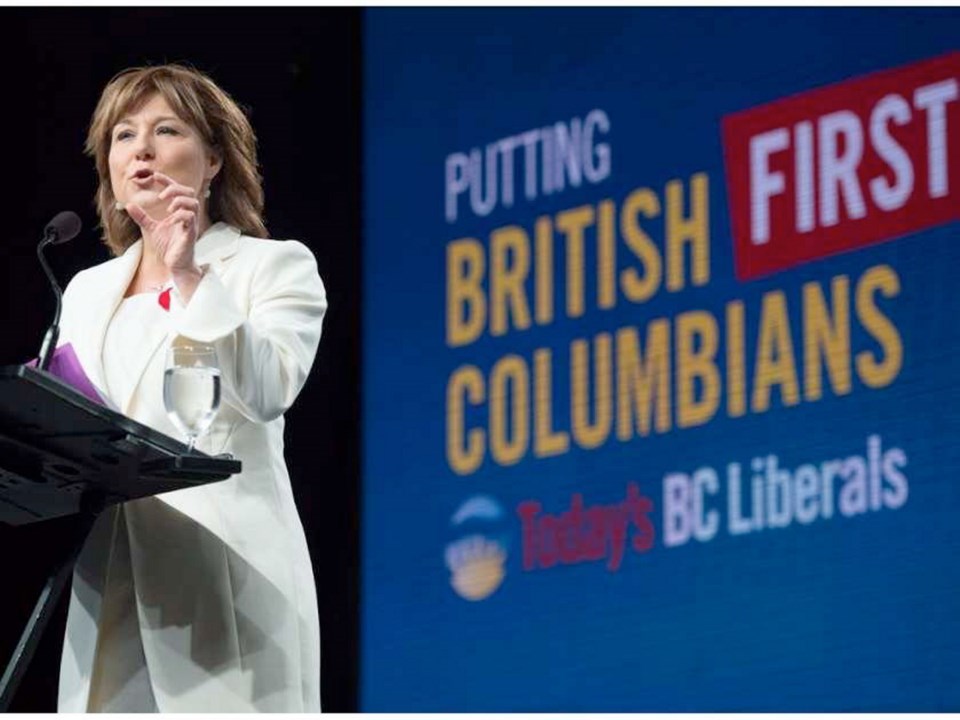VICTORIA — In a small meeting room at a Coquitlam hotel, the B.C. Liberal Party is test-driving many of the ads that will saturate your social-media feeds, and TV airwaves, during the election campaign.
Focus groups sit and watch a mixture of feel-good Liberal videos featuring a smiling Premier Christy Clark, as well as some particularly vicious attack ads about NDP leader John Horgan. One yet-unreleased spot features Horgan’s signature on the termination paperwork for Adrian Dix, when both were staffers in the NDP government of the 1990s and Dix backdated a memo; the voice-over insinuates both men are of similar character.
Participants get $75 per session. Often, the groups are broken down by gender. They’re asked questions not only about the ads, but about Horgan himself: What does he stand for? What do you think about his positions?
How people react to the tone and imagery of these ads plays a key role in how the B.C. Liberals spend their massive election war chest. The responses are carefully analyzed by Maple Leaf Strategies, the firm run by Dimitri Pantazopoulos, the premier’s former principal secretary and Liberal party pollster.
It’s not particularly earth-shattering that focus groups exist. Parties of all stripes would be foolish to spend millions on ads without first getting feedback. The NDP have their own attack ads and research, too.
But it’s nonetheless a peek behind the curtain on what’s become an extremely sensitive issue for the Liberals.
The deluge of party ads are only possible because of the massive amount of money (more than $12 million in the past year) that the Liberals have raised through cash-for-access fundraisers with wealthy corporate donors.
That embarrassment of riches has apparently ticked-off voters, with 76 per cent of people polled recently by Angus Reid saying they feel the Liberal government is only interested in helping political donors and big business, and 71 per cent supportive of an NDP proposal to ban corporate and union donations.
The public frustration is amplified because of how similar the party ads are to the government ones using tax dollars. The topics are similar — Medical Services Plan reductions, affordable-housing projects, the jobs plan and economic growth — as are the colour-schemes, graphics and logos of both the B.C. Liberals and the Government of B.C.
Vancouver lawyer Paul Doroshenko is leading a lawsuit on behalf of citizens who believe that government is using public funds for partisan gain after it doubled its taxpayer-paid advertising budget to $15 million just before the election.
“It’s grotesque beyond belief,” NDP critic Mike Farnworth said of all the ads. “I have never seen any government do anything quite like this, in terms of taxpayer-funded advertising right next to an election. It really is taken to a level we’ve not seen in this province, not under the NDP, under (Gordon) Campbell or under the Socreds.”
In reality, governments of all stripes have been guilty of the same advertising abuses over the past 30 years, if not longer.
When the Social Credit government was in power in the late 1980s, the then-opposition NDP decried its quarterly mail-out newsletter, called “B.C. News,” as well as the frequent ads on the 6 p.m. TV news.
That outrage didn’t last long after Mike Harcourt and the NDP ran Social Credit out of power in 1991. The Harcourt administration spent $42 million on advertising in 1994-95, adjusted for inflation. That’s a total still unmatched in its largesse by any government since.
Harcourt said at the time that British Columbians deserved to hear facts about his budget, which included a freeze on taxes and a property-tax break for first-time homebuyers. Erase the word “Harcourt” from that previous sentence and it could pass as something you’d read today from the B.C. Liberals.
Subsequent NDP premiers courted criticism on taxpayer advertising again and again, including a scandal involving giving millions in contracts to NOW Communications, a firm run by a failed NDP candidate.
”We have to go around (the media),” then-Premier Glen Clark said in 1998, in justifying his more than $20 million in annual ad spending. ”I’m absolutely convinced that if people knew what the government was doing, or trying to do, that we would have significantly higher support than we do now.”
Then-Liberal opposition leader Campbell fumed at the time. ”What this government does with taxpayers’ money, wasting it on propaganda like this, is obscene,” he said in 1998.
Then-Liberal critic Christy Clark hammered the NDP for a $700,000 ad campaign for its 1999 budget. “People don’t want the government to spend $700,000 of their money so they can find out how to access services,” she charged.
Alas, that outrage was also short-lived after the Liberal win in 2001. Campbell spent as much as $32 million in 2008-09 on advertising, including many of his own dubious, budget-promoting campaigns. He promised to limit pre-election ads to only essential issues, but it proved a one-off reform in 2009.
When Christy Clark took over as premier in 2011, she spent even more, racking up $35 million in 2011-12 and $34 million in 2012-13. Her government is expected to spend $15 million this fiscal year, ending March 31, including $2 million for public awareness on the fentanyl overdose crisis.
Andrew Wilkinson, the minister who controls advertising, said government follows guidelines set by the auditor general in 2014 that the ads be related to services, be non-partisan and fact-based. He added he hasn’t heard many complaints.
The NDP has said that if it wins the election it will have the AG vet all government ads to make sure they’re non-partisan.
In the meantime, more ads are coming, by all sides.
Voters would be wise to be skeptical about election promises to reform the advertising gravy train. The last eight or nine premiers have all said the same thing. Then they got control of the purse strings. And they’ve all kept on spending public money.



